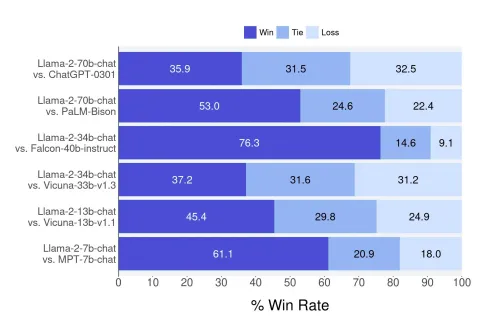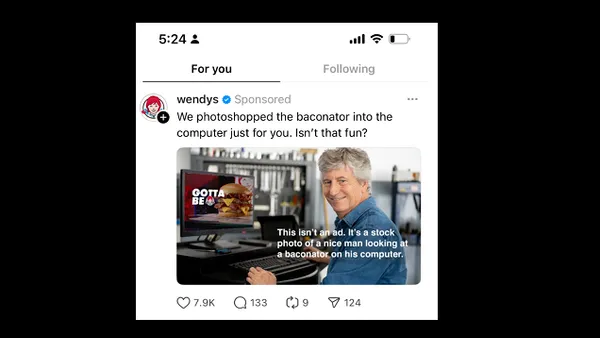“Sociable” is the latest commentary on important social media developments and trends from industry expert Andrew Hutchinson of Social Media Today.
Today, Meta has released its latest Llama 2 large language model (LLM), which, in testing, has outperformed other open-source chat models (including GPT) on most benchmarks, including helpfulness and safety. Even more interesting, Meta and Microsoft have also announced an expansion of their partnership, which will enable developers using Microsoft tools to choose between Meta’s Llama and OpenAI’s GPT models when building their AI experiences.
In light of Meta's release and the testing results, it’s interesting to see how Microsoft is re-angling itself in the generative AI push.

Llama 2 will be made commercially available, free of charge, providing an alternative to the current LLMs available via Google and OpenAI, and potentially positioning Meta as a leader in the emerging AI development space.
As part of the new release, Meta’s sharing three different versions of the model. One is trained on 7 billion parameters, one on 13b, and finally, a 70b version, while it’s also releasing Llama 2 Chat, a more fine-tuned variation that’s built specifically for conversational use cases.
As per Microsoft about the expanded relationship with Meta:
“Today, at Microsoft Inspire, Meta and Microsoft announced support for the Llama 2 family of large language models (LLMs) on Azure and Windows. Llama 2 is designed to enable developers and organizations to build generative AI-powered tools and experiences. Meta and Microsoft share a commitment to democratizing AI and its benefits and we are excited that Meta is taking an open approach with Llama 2.”
Microsoft has also invested $10 billion into OpenAI, and has already built GPT into most of its tools and platforms. And now, it’ll also be plugging Llama 2 into various applications, which will see Microsoft become a key platform in facilitating connection between consumers and these leading LLMs.
A key focus of Meta’s Llama 2 model is safety, and ensuring that the results produced by the system are accurate and limit misuse. Which could be a significant step, considering the various issues that have been reported with some early LLMs, including GPT, which has often led users astray due to ‘hallucinations’ and sharing of misinformation and/or harmful perspectives.
In order to mitigate this, Meta has added significant training load around various elements, including ‘truthfulness’, ‘toxicity’, and’ bias’. Based on this additional work, Meta says that Llama 2 Chat ‘shows great improvement over the pretrained Llama 2 in terms of truthfulness and toxicity'.
“The percentage of toxic generations shrinks to effectively 0% for Llama 2-Chat of all sizes: this is the lowest toxicity level among all compared models. In general, when compared to Falcon and MPT, the fine-tuned Llama 2-Chat shows the best performance in terms of toxicity and truthfulness.”
That could make this an even more useful generative AI tool, which could be more relied upon for a broader range of tasks. Because while GPT is amazing in its capacity to produce human-like text generations, there are also significant risks in using those outputs without checking and re-checking any and all references and language, in order to ensure that it’s not being negatively influenced by its various inputs.
If an LLM could be more trusted in this respect, that could significantly expand its use case, which Llama 2 is theoretically more equipped to address.
It’s an interesting new consideration either way, and the integration with Microsoft will see Meta’s new LLM play a bigger role in broader AI development, and could see Meta’s system eventually become a key leader in the space.
Microsoft Azure AI customers will be able to test Llama 2 with their own sample data, in order to test its performance in different contexts.
You can read more about the Llama 2 process and dataset here.














